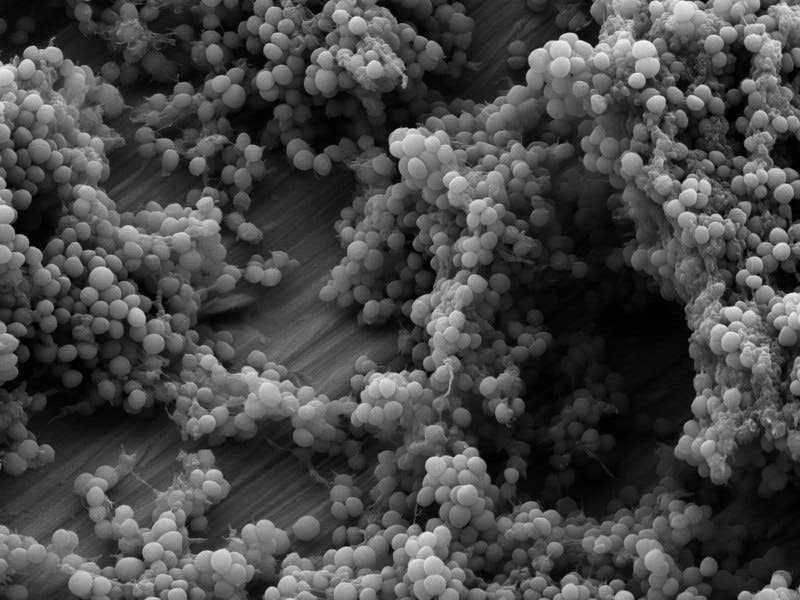Researchers at the University of Bath, UK, report that an extremely common bacterium is developing antibiotic resistance.
MRSA, E. coli, they’re all very scary. But new research says there’s a newcomer to the Scary Table: Staphylococcus epidermidis, a widespread species that lives on our skins. A close relative of MRSA, this bacteria is a leading cause of infections (some of them life-threatening) following surgery.
It’s abundant, widespread, generally overlooked — and rapidly becoming resistant to antibiotics, warn researchers at the Milner Centre for Evolution at the University of Bath.
Staphil-oh no no no.
The team says we should take the threat posed by S. epidermidis much more seriously than we do today. They recommend taking extra precautions especially in the case of patients with heightened risk of infection that are due to undergo surgery.
The researchers started by retrieving samples of the bacteria from patients who developed infections following following hip replacement, knee joint replacement, and fracture fixation operations. Then, they compared the genetic material of these strains with those in swab samples harvested from the skin of healthy volunteers.
They report identifying a set of 61 genes that allow some strains of S. epidermidis to cause life-threatening infection. These genes help the bacterium grow in the bloodstream, avoid the host’s immune response, make the cell surface sticky so that the organisms can form biofilms, and make the bug resistant to antibiotics, they write. This finding, the team hopes, will further our understanding of why some strains can become infectious — in the future, this should help us keep the risk of post-surgery infection with S. epidermidis at bay.
The team also found that a small number of (healthy) individuals carry a much more deadly strain of the bacteria on their skin. Determining which strain (relatively harmless, dangerous, or one of these very dangerous ones) a potential patient carries on their skin before surgery would help doctors prepare extra hygiene precautions as needed.
“[S. epidermidis has] always been ignored clinically because it’s frequently been assumed that it was a contaminant in lab samples or it was simply accepted as a known risk of surgery,” says Professor Sam Sheppard, Director of Bioinformatics at the Milner Centre for Evolution at the University of Bath and the study’s lead author. “Post-surgical infections can be incredibly serious and can be fatal. Infection accounts for almost a third of deaths in the UK so I believe we should be doing more to reduce the risk if we possibly can.
“Because the bug is so abundant, they can evolve very fast by swapping genes with each other,” he explains. “If we do nothing to control this, there’s a risk that these disease-causing genes could spread more widely, meaning post-operative infections that are resistant to antibiotics could become even more common.”
The paper “Disease-associated genotypes of the commensal skin bacterium Staphylococcus epidermidis” has been published in the journal Nature Communications.










